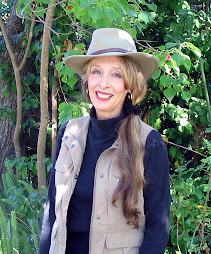Actually, we are always making a difference. Our actions either reinforce or redefine the status quo. As Frances Moore Lappé has said, “the choice we have is not whether, but only how, we change the world.” She encourages us to find “entry points,” small openings where we can begin making a difference (2010, pp. 118, 184).
We can begin looking for entry points by asking “What CAN I do?” With all the news of the big banks refusing to make loans and refinance mort
Over Thanksgiving, I heard about the “knit-in for the sit-in,” a creative idea from Maxina Ventura of Occupy Berkeley, who invites knitters to affirm solidarity with the Occupy movement by making hats, gloves, mittens, and scarves to send to people camped out this winter. This week I knitted my first stocking cap for a brother or sister in the movement.
When we reach out in hope, we are never alone. On the wall of my study is a quote from Margaret Mead: “Never doubt that a small group of thoughtful committed citizens can change the world. Indeed, it’s the only thing that ever has.”
In her new book, Ecomind, Lappé tells of a small group of citizens in Chattanooga, Ten
The next time you feel overwhelmed by national and global problems,
ask yourself, “What CAN I do?”
and begin to make a difference,
right here, right now.
Lappé, F. M. (2010). Getting a Grip2. Cambridge, MA: Small Planet Media.
Lappé, F. M. (2011). Ecomind: Changing the Way We Think to Create the World We Want. New York: Nation Books.
Seligman, M. E. P. (1991) Learned optimism. New York: Knopf.
For information about the “knit-in,” see http://sanfrancisco.cbslocal.com/2011/11/26/crafters-organize-knit-in-in-solidarity-with-occupy-berkeley/. Knitted and crocheted items may also be sent to Occupy Berkeley, c/o Maxina Ventura, 2399 E. 14th St. No 24, San Leandro, CA 94577.













